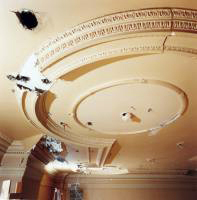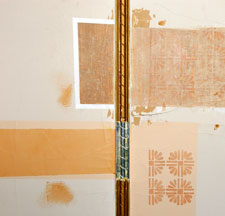Life Safety UpgradesWhen visitors experience the grandeur of the Capitol building today, it is hard to imagine that this beloved state treasure had once suffered many indignities, reaching its lowest point in terms of neglect by the early 1980s. Decades of alterations had concealed and even destroyed artistic masterpieces. Occupants of the Capitol decorated according to their personal often eclectic tastes. Maintenance workers could not find electrical junction boxes. Repairs were expedient, and renovations were often without reverence to the historic value of the building structure. Without a coordinating body no far-reaching plan guided changes to ensure continuity. In 1982 the Pennsylvania Capitol Preservation Committee was created by the General Assembly (Act 327). As an independent Commonwealth Committee, its purpose is implementing and directing programs to conserve and restore the Pennsylvania State Capitol and its historic and artistic contents. Improvement began as the Department of General Services led a campaign to make necessary upgrades in utilities and implement life safety and ADA modifications throughout the building. As this work commenced, the Committee was able to provide expert guidance, from knowledge of period decorative arts to experience in balancing preservation ideals with the needs of a modern working office. In conjunction with General Services' state-of-the art improvements, the Committee worked within the parameters of preservation of the Capitol as an artifact. Whether it was artisans carefully concealing a new sprinkler head inside of an old plaster rosette, or working with contractors to figure out ways of running wires in hidden locations, the Committee has always been guided by the integrity of architect Joseph Huston's original grand design. He envisioned and created a seamless blend of architecture, art, and decor meant to project the highest ideals of government. For more than twenty-five years the partnership with the Department of General Services has successfully enabled the Committee to restore portions of the Capitol that are architecturally or artistically integral to preserving the building's history for future generations. |
TYPICAL CAPITOL OFFICE
OFFICE CEILING UTILITY
EXPOSURE WINDOW REVEALING ORIGINAL |


